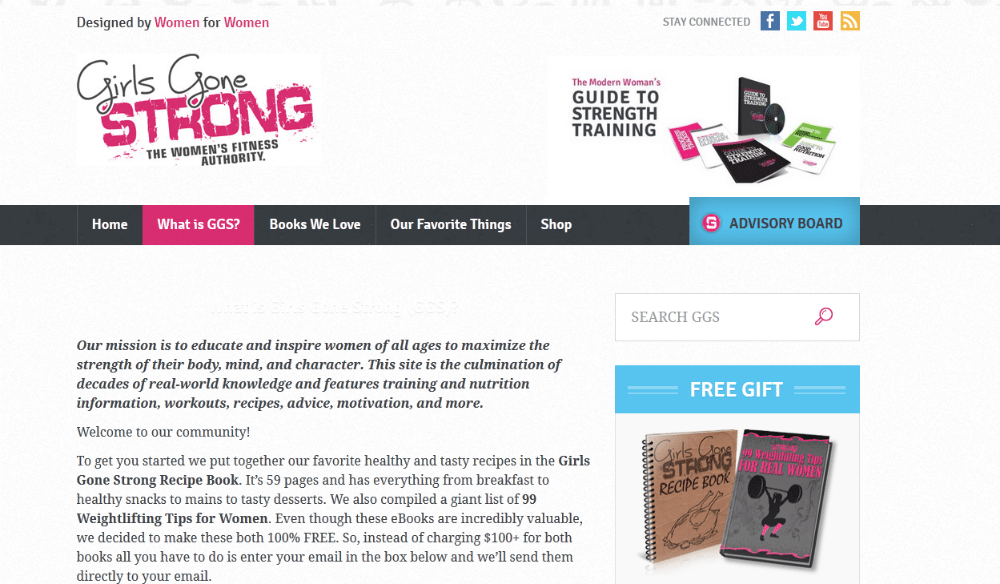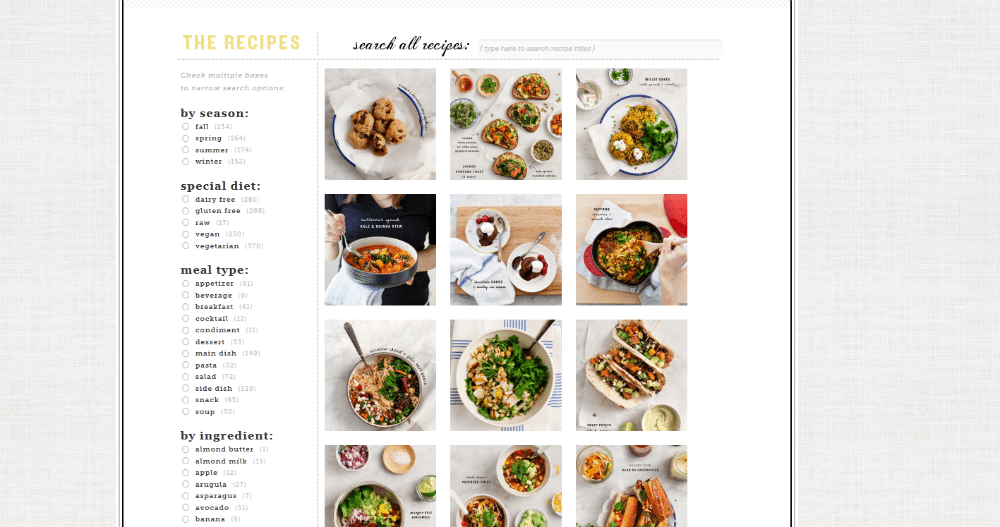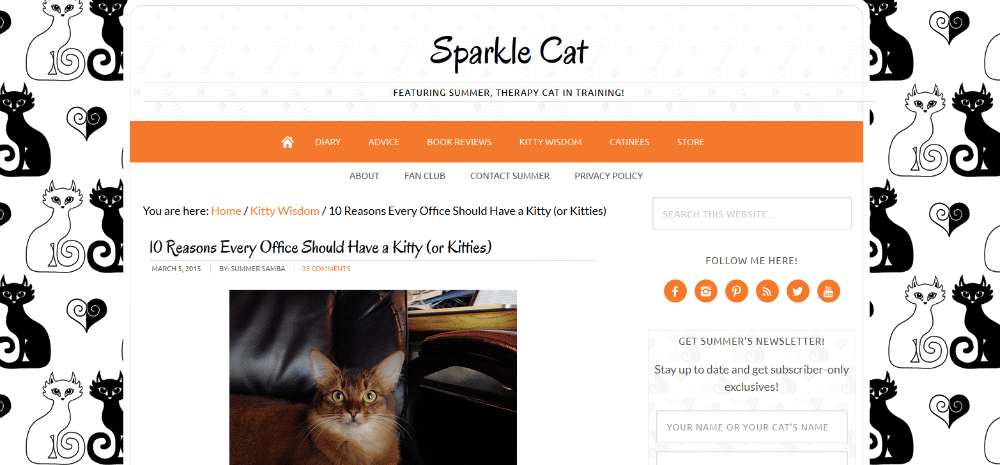5 Ways to Make Your Blog Stand Out
With the number of blogs on the internet coming in at well over 1.3 million, setting yourself apart can seem daunting to say the least. To help tackle this monumental task, I’ve identified five simple principles that are guaranteed to make you stand out above the crowd—and you won’t even have to shout out loud.
1. Have a Clear Direction
Before you write your first post or decide how much Comic Sans you will use (hint: none), you need to know the subject, angle, and purpose of your blog. These three elements together will give you direction for the design and content of your site. Tweet This
The subject of your blog will be guided by your business. For instance, if you sell hair products, your subject will be all things hair. Pretty simple.
Now for your angle. This is the unique spin that you will take on your subject. Maybe your hair products are all eco-friendly. Mayhap they smell like strawberries. Or perchance you’re catering exclusively to men with top knots. Whatever sets you apart, this is your angle, and your design and content will need to highlight it.
Finally, your purpose. Your purpose is what you want your blog to accomplish. To determine this, ask yourself a few questions:
- What is our audience looking for?
- How can our blog help them with their goals?
- Our readers should walk away from our blog feeling ____.
- We want our customers to do ______ after reading our blog.
Answering these questions will help you uncover the purpose of your blog. Some blogs are created to promote ideas or start a conversation. Some aim to help readers accomplish a task or improve their lives in some way. Others exist simply to make consumers aware of products and opportunities.
Here’s one blog that has a very clear subject, angle, and purpose:

- Subject: women’s fitness
- Angle: strength
- Purpose: “To educate and inspire women of all ages to maximize the strength of their body, mind, and character.”
The subject, angle, and purpose give this blog clear direction: the design is bold, reflecting the idea of strength, and the content is focused on building up and inspiring women in a powerful way. The authors of this blog made their job much easier by taking time to create a definite focus.
2. Steer Clear of Shmeh Content
You know when you ask your friend how the latest episode of “Keeping up with the Kardashians” was, and she shrugs and says, “Shmeh”?
You do not want that to be the reaction to your blog posts.
All of the content you post should be well written, timely, and have a fresh, new angle. Sound like a tall order? Don’t worry, all it takes is a little brainstorming.
Start by making a gigantic list of all of the possible topics you can think of that are pertinent to the objective of your blog. Don’t fret about making them sound fantastic or creating gripping titles right now. Just get all of your ideas on paper. When I did this, I was amazed at how many ideas I was able to come up with.
Next, write down as many kinds of posts as you can think of (lists, how-tos, videos, interviews, slideshows, etc.). Look at your two lists, and jot down which kinds of posts would go best with which topics.
After you’ve exhausted your ideas to the point of listlessness, draw from other sources. Ask your readers what they want to hear about, look at other blogs within your industry, and consider inviting contributors to your blog. This last resource is especially beneficial.
When I first took over our freelance writer blog, I was a bit overwhelmed with figuring out how a small team could generate content consistently enough to make the blog a viable resource. However, drawing on the expertise of our freelance writers opened up a wealth of valuable content. They came up with great ideas that I never would have thought of, and enlisting the help of others has allowed me to keep some posts on reserve. When unforeseen publication delays arise, I can draw on that reserve and preserve the consistency of our posting schedule.
Inviting others to contribute to your blog doesn’t just take the pressure off you; it also adds personality, ideas, and variety to your posts. Plus it’s a great way to help your employees stretch and feel like part of the team (even better than those awkward team building exercises you’ve been trying).
Even with all of these resources, it is possible that a day will come when you find yourself with nothing to post. If that happens, don’t sacrifice quality for quantity. If you really, really have nothing good to say, don’t say anything at all. Don’t dumb down your blog with shmeh content.
3. Stick to a Regular Posting Schedule
Now that you have a clear purpose for your blog and lots of great content, you need to make sure that your blog is a main source of information for potential customers. That means posting often to keep readers coming back.
How often?
Well, that depends.
The frequency of your posts is determined by the type of blog you have and what you want it to accomplish. A news-focused blog will naturally need frequent (perhaps daily) posts to keep up with current events, while a DIY blog could get away with posting weekly or semi-weekly.
Most blogs should post new content at least once a week; any less and readers will likely lose interest in or forget about your blog. New content keeps readers coming back, increases social media traffic on your blog, and improves your search engine rank. But posting too often could cause you to become sloppy and could overwhelm readers. Experiment to find a schedule that works for your blog.
If your blog is new, you may want to post a few times a week to build up your content and your reputation. Once you feel comfortable about where your blog is, try easing down to once or twice a week, and spend more of your time focusing on getting your name out there.
When you’ve found a good long-term schedule, stick to it. Consistency will help you build credibility with your followers. Tweet This
4. Categorize Your Content
In a Ted Talk called “How to Make Choosing Easier,” Sheena Iyengar explains that when people are faced with choosing between several different options, they become overwhelmed and often avoid making any decision at all.
The way to get around this decision fatigue? Categorization. “We can handle more categories than we can choices,” Sheena says. She uses the example of a magazine aisle at the grocery store. Studies show that if consumers are given 600 magazines split into 10 categories and 400 magazines split into 20 categories, they feel that they have been given more choices and a better experience with the 400 magazines. Because, Sheena says, categories tell us how to tell things apart.
So how does categorization affect your website? Humans have short attention spans, so a reader who visits a blog with a huge list of articles to choose from will likely feel overwhelmed and will click away. Make it easy for your readers to find what they are looking for; organize your blog and categorize your content. Tweet This
In creating categories, consider your audience. Your blog should have one main readership, but you’ll have subgroups of readers who are interested in different things. For instance, a food blog will have some followers who are mainly interested in savory dishes, while others go straight to the dessert articles.
Here’s a food blog, Love and Lemons, that does a superb job of organizing its content.
Love and Lemons allows you to search for recipes by season, special diet, meal type, or ingredient. Within each category is a subcategory that narrows your search even further. Notice how nice and organized the photos are too.
Organization will make your blog aesthetically pleasing and easy to navigate. Explore different categories and layouts to find what works for your blog.
5. Have a Personality
This isn’t a personal critique. I’m sure you have a lovely personality…or maybe “lovely” isn’t the right word. Maybe you’re spunky, outspoken, or a little rough around the edges. That’s great! Whatever your personality, let some of that come through in your blog.
Consumers are looking for personality in and a personal connection to the things they consume. Your blog should not only reflect your company, it should reflect the people behind the company. Put some personality into your writing and let other contributors do the same.
Here’s a blog that will never be accused of not having enough personality.

The personality behind Sparkle Cat shines through the design, the pictures, the wording, and the angle (it’s written from the cat’s perspective).
Depending on the type of company you have, your blog may not be able to effuse as much personality as this one—your blog does need to reflect the company image, after all—but play around a little with tone, design, and topics. Find a balance between professionalism and personality so your readers trust you and know that there are real people behind the blog.
You’ve probably realized by now that you’re going to have to do some experimenting to find what works for your blog. Try different approaches until you feel confident that your blog represents your company in the best possible way. Your company blog is a crucial part of your business success, and blogs have an enormous influence on purchasing decisions. So make sure yours stands out.
After experimenting a little, let us know what you think. What have you found that works for you? What elements do you think are crucial for a solid blog?

Great stand out blog on how to help blogs stand out!
Agreed, Blogs should capture your interest so you want to read the whole thing and keep coming back for more.
Number 3 is key especially to your loyal subscribers and generating new followers. It’s a game of regularity that keeps them coming back for more (because they can expect it).